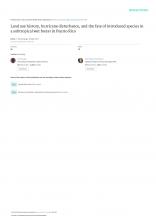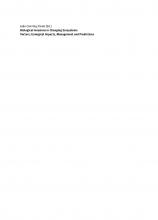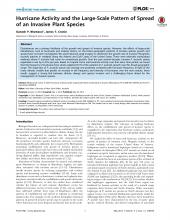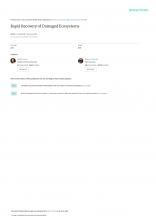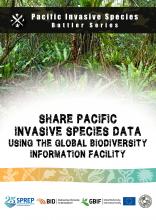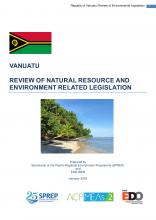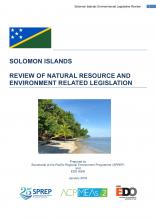Land use history, hurricane disturbance, and the fate of introduced species in a subtropical wet forest in Puerto Rico


Island and Ocean Ecosystems, BRB
Available Online
Lugo, Ariel E.
,
Thomlinson, John
,
Thompson, Jill
2007
Tropical forests are suffering from increasing intensities and frequency of disturbances. As a result, non-native species accidentally introduced or intentionally planted for farming, plantations, and ornamental purposes may spread and potentially invade undisturbed native forest. It is not known if these introduced species will become invasive, as a result of recurrent natural disturbances such as hurricanes. Using data from three censuses (spanning 15 years) of a 16-ha subtropical wet forest plot, we investigated the impact of two hurricanes on populations of plant species that were planted in farms and plantations that were then abandoned and from the natural spread of species introduced into Puerto Rico in the past. The populations of four species (Citrus paradis, Mangifera indica, Musa sp., and Simarouba glauca) changed little over time. Six species (Artocarpus altilis, Calophyllum calaba, Genipa americana, Hibiscus pernambucensis, Syzygium jambos, and Swietenia macrophylla) declined between the first two censuses after Hurricane Hugo, then increased again in Census 3 after Hurricane Georges. Spathodea campanulata gradually increased from census to census, while Coffea arabica declined. These introduced species represent only a small part of the forest basal area and few show signs of increasing over time. The number of stems per plant, new recruits, and the growth rates of these introduced species were within the ranges of those for native plant species. The mortality rates over both census intervals were significantly lower for introduced species (
